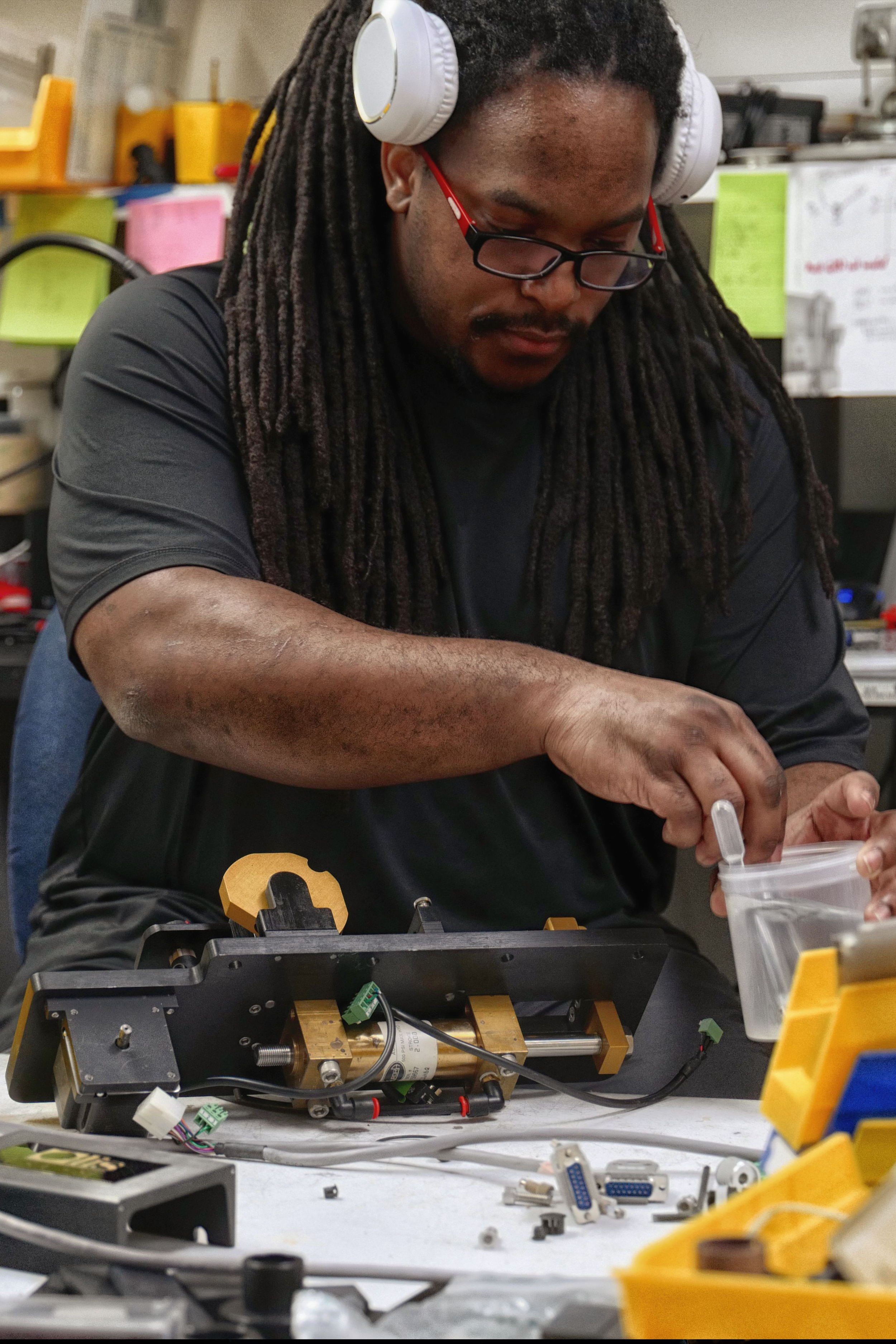How Uv/vis/nir can Save You Time, Stress, and Money.
How Uv/vis/nir can Save You Time, Stress, and Money.
Blog Article
The Single Strategy To Use For Uv/vis
Table of ContentsGet This Report about SpectrophotometersCircularly Polarized Luminescence Fundamentals ExplainedThe Ultimate Guide To Circularly Polarized LuminescenceThe Best Strategy To Use For Uv/vis/nirRumored Buzz on Circular Dichroism

Spectrophotometry is a tool that hinges on the quantitative analysis of particles depending on how much light is soaked up by colored compounds.
The smart Trick of Spectrophotometers That Nobody is Discussing
A spectrophotometer is commonly utilized for the measurement of transmittance or reflectance of options, transparent or nontransparent solids, such as refined glass, or gases. Although lots of biochemicals are colored, as in, they soak up visible light and for that reason can be determined by colorimetric procedures, even colorless biochemicals can often be transformed to colored compounds suitable for chromogenic color-forming responses to yield substances appropriate for colorimetric analysis.: 65 Nevertheless, they can also be developed to determine the diffusivity on any of the listed light varieties that generally cover around 2002500 nm utilizing different controls and calibrations.
An example of an experiment in which spectrophotometry is used is the determination of the stability constant of a service. A certain chemical response within a solution might happen in a forward and reverse direction, where reactants form products and items break down into reactants. At some time, this chemical response will reach a point of balance called an equilibrium point.
The smart Trick of Circularly Polarized Luminescence That Nobody is Discussing
The quantity of light that travels through the service is indicative of the concentration of certain chemicals that do not enable light to travel through. The absorption of light is because of the interaction of light with the electronic and vibrational modes of molecules. Each type of particle has an individual set of energy levels related to the makeup of its chemical bonds and nuclei and thus will soak up light of particular wavelengths, or energies, leading to distinct spectral properties.
Making use of spectrophotometers spans various scientific fields, such as physics, materials science, chemistry, biochemistry. spectrophotometers, helpful hints chemical engineering, and molecular biology. They are extensively used in numerous markets including semiconductors, laser and optical manufacturing, printing and forensic assessment, in addition to in labs for the study of chemical compounds. Spectrophotometry is frequently used in measurements of enzyme activities, determinations of protein concentrations, decisions of enzymatic kinetic constants, and measurements of ligand binding reactions.: 65 Eventually, a spectrophotometer is able to identify, depending upon the control or calibration, what substances are present in a target and exactly just how much through calculations of observed wavelengths.
This would come as a solution to the previously developed spectrophotometers which were unable to soak up the ultraviolet correctly.
Little Known Questions About Circularly Polarized Luminescence.
It would be discovered that this did not provide acceptable outcomes, for that reason in Model B, there was a shift from a glass to a quartz prism which enabled much better absorbance outcomes - circular dichroism (https://www.twitch.tv/olisclarity1/about). From there, Design C was born with a modification to the wavelength resolution which ended up having three systems of it produced
It irradiates the sample with polychromatic light which the sample absorbs depending upon its homes. It is transferred back by grating the photodiode selection which discovers the wavelength area of the spectrum. Ever since, the creation and execution of spectrophotometry gadgets has increased immensely and has actually turned into one of the most innovative instruments of our time.

About Spectrophotometers
Historically, spectrophotometers use a monochromator consisting of a diffraction grating to produce the analytical spectrum. The grating can either be movable or repaired. If a single detector, such as a photomultiplier tube or photodiode is utilized, the grating can be scanned stepwise (scanning spectrophotometer) so that the detector can measure the light strength at each wavelength (which will correspond to each "action").
In such systems, the grating is repaired and the intensity of each wavelength of light is determined by a various detector in the range. When making transmission measurements, the spectrophotometer quantitatively compares the fraction of light that passes through a referral option and a test option, then digitally compares the intensities of the 2 signals and computes the portion of transmission of the sample compared to the reference requirement.

Report this page